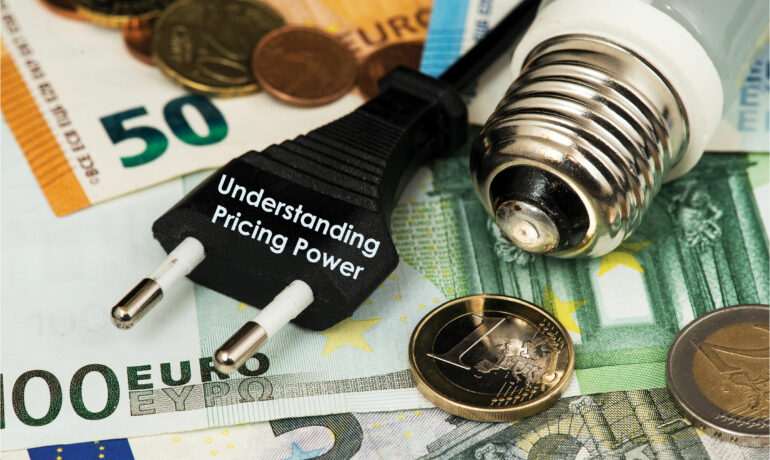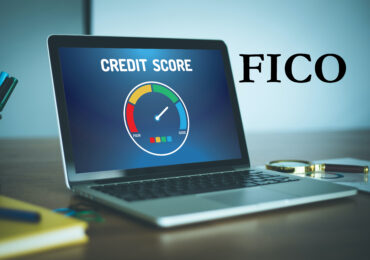The S&P 500 Index returned -16.10% and the S&P Global Broad Market Index returned -15.70% in the quarter ended June 30, 2022.1
In our last letter, we discussed why we are confident our portfolio of global champions can successfully navigate a prolonged period of stagflation (though, given the fundamental unpredictability of the future, we by no means think stagflation is a fait accompli; for proof, just look at how radically economic expectations have changed over the last two years!). While we mentioned a number of key attributes that allow our portfolio to deal well with stagnant economic growth and high inflation, such as our businesses’ conservative balance sheets and our portfolio’s diversification across macroeconomic factors, we highlighted our businesses’ enduring pricing power as our biggest reason for confidence.
In our view, this enduring pricing power is most often associated with businesses that own dominant networks in industries growing at least as fast as GDP. Therefore, when we evaluate a business, we analyze the size and breadth of its network relative to competitors, whether the network’s user numbers and usage per capita are growing or shrinking, whether the network is maintaining or gaining market share, and whether the industry in which the network operates has grown at least as fast as GDP over time. If a business’s network scores highly on these metrics, we believe it is likely to possess some degree of pricing power. Then, in order to gain greater confidence in both the likelihood and degree of this pricing power, we search for evidence that’s not merely suggestive of this pricing power but that demonstrates it directly. In the rest of this letter, we’ll enumerate the types of evidence we have historically found. Furthermore, given continued investor fears about stagflation, we’ll look at how this pricing power evidence increases our confidence in our businesses’ ability to maintain profitability in the face of both raw material and wage inflation.
Evidence of Pricing Power
The first piece of evidence of pricing power is high gross margins, which represent the difference between the price at which a company can sell a good and the cost to produce that good. Over the last twelve months, the average company in the S&P 500 had a gross margin of roughly 38%.2 However, some companies, including a number that we own, had gross margins of 80% or higher. In other words, the average company in the S&P 500 could produce a good for $62 dollars and sell it for $100, or roughly 1.6 times the cost of production, and the 80% gross margin company could produce a good for only $20 and still sell it for $100, an astounding 5 times the cost of production. And this difference in pricing power isn’t theory – it’s what has actually happened over the last twelve months, providing one of the strongest pieces of pricing power evidence.
The second piece of evidence of pricing power is high operating margins, which represents the difference between the price at which a company can sell a good and the cost to produce, advertise, and market the good as well as any other costs associated with operating the company that sells the good. In our view, if a product truly has a strong network effect, where the value increases exponentially as more users are added, then a company shouldn’t have to spend a lot to sell the product once the size of its network meaningfully exceeds most competitors. Rather, the product should, in some sense, sell itself as the network’s explosion in value to consumers creates a viral, referral-based, positive feedback loop. Thus, for the businesses we own with the most powerful network effects, we see both very high gross margins and very high operating margins. A great example is Visa, which has such high margins that its 70% operating margin is over eighty percent higher than the average S&P 500 company’s gross margin of 38% and more than four times the average S&P 500 company’s operating margin of 16%. Here again, high operating margins demonstrate strong and direct evidence of pricing power.
The third piece of evidence of pricing power is a large, customer-favoring price-value gap, wherein the price at which a company sells a product is much lower than its value to the customer. There are a number of ways to identify whether this sort of price-value gap exists. The first method is to study the resale market. If a product can routinely be sold at a higher price than the cost to purchase it from the company, this is a strong signal that the company has untapped pricing power. For example, unlike competing handbag brands, almost all of Hermes’s handbag styles routinely trade hands in the resale market at higher than retail prices.3 And this price to value gap tends to increase along with scarcity of the handbags in Hermes’s collections. For example, the hard-to-obtain 25 cm Himalayan Birkin bag currently retails for between $45,000 and $65,000 but regularly sells at auction for over $200,000, and the slightly larger 28 cm Himalayan Kelly Bag regularly sells for over $300,000.4 Many of our other luxury goods holdings exhibit similar dynamics, with Ferrari’s LaFerrari coupe having retailed in 2016 for $1.4 million before being sold at auction for up to $7 million5 and the Dior x Nike Air Jordan 1 sneakers having retailed in 2020 for roughly $2,000 before being resold for as much as $20,000.6 The second method we use to identify big price-value gaps is to find customer testimonials that compellingly quantify the price versus value of a product or service. One example of these testimonials was an article we found in which the management at Heineken, one of the largest beer manufacturers in the world, decided in 2012, for the first time ever, to hire the rating agencies to rate one of its bond issuances. Despite being one of the largest, oldest, and simplest businesses in the world, management still estimated that getting its bonds rated saved Heineken 30 to 50 basis points per year of interest costs.7 Given that S&P Global only charged about 7 bps per year for these ratings as recently as 2019,8 this data point gives us even more confidence in the rating agencies’ ability to raise prices at least as fast as inflation for many years to come (not to mention there’s already a natural inflation hedge built in since they charge a percentage of the bond issuance). Through similar customers testimonials, we’ve been able to gain further confidence in the pricing power of businesses such as Adobe and CoStar Group. The third method we use to identify big price-value gaps is to remember that we, too, are customers and to use our own consumer choices as evidence of big price-value gaps. For instance, we use QuickBooks for our back-office accounting, and, as we were analyzing Intuit, we realized none of us could even recall how much we paid per year for our subscription. When we investigated further, we figured out why. The price of the service is such an inconsequential number relative to its value that even if the price doubled or tripled, we wouldn’t hesitate to pay it. As we reflected on other products with which we regularly interact in both our personal and professional lives, we realized our Microsoft Office and Amazon Prime subscriptions provide similarly compelling value relative to their prices.
The fourth and last piece of evidence we try and find is a history of pricing actions that appear to have had little to no impact on customer retention and/or volume growth. For instance, according to a study published a few years ago by the website Baghunter, Hermes Birkin bags increased in value at a compound annual rate of 5.4% over the almost 37-year period from 1980 through the first half of 2017.9 Inflation, on the other hand, only increased by 2.9% per year over this period. In other words, by the end of the period, it cost nearly three times more dollars to purchase most goods and services but a whopping seven times more dollars to purchase an Hermes Birkin Bag. Yet, despite Hermes’s massive price increases, Birkin bags have arguably never been more coveted. Hermes, while certainly a standout, is by no means the only company in our portfolio with a history of successful price increases. Through our research, we’ve found numerous examples of our portfolio companies passing through above-inflation price increases with no discernible impact on retention or long-term volume growth, furthering our confidence in their continued pricing power.
Inflation Protection Through Pricing Power
Now that we’ve explained how we gain greater confidence in our businesses’ pricing power, let’s examine how this pricing power is able to provide better-than-average profitability protection from both the raw material and wage inflation our businesses are currently experiencing. The first challenge of this inflationary environment has been for companies to maintain gross margins in the face of rising energy, food, and other raw material costs. Many of our businesses, such as our software, credit rating, and payment processing holdings, deal mainly with information and thus have very few raw material costs. As a result, assuming stable demand for their products, they experience almost no profitability impact from raw material inflation. Our luxury and consumer products holdings, on the other hand, are definitely impacted by these higher costs. However, because many have 60% to 70% gross margins, they are much less impacted than the average businesses. For instance, Hermes, with its 65% gross margins, can offset a 10% increase in its raw material costs with only a 3.5% increase in its prices. The average company in the S&P 500, with only 38% gross margins, has to raise prices by 6.2% to offset the same 10% increase. The second challenge of this inflationary period increasingly appears to be offsetting not just higher raw material costs but sustained wage inflation as well. In such an environment, where costs are rising across the whole income statement, our businesses’ high operating margins are similarly advantageous. Whereas the average business in the S&P 500, with 16% operating margins, has to raise prices by 8.4% to protect its profitability if costs rise by 10% across the board, a business such as Visa, with 70% operating margins, only has to increase prices by 3.0% to protect its profitability. Moreover, and perhaps most importantly, because we believe the evidence shows our companies have significant untapped pricing power, we believe they are much more likely than the average company to successfully pass along price increases. In other words, whereas the average company may find that increasing prices decreases demand, we believe our companies can increase prices with no negative impact on the number of units they sell.
Concluding Thoughts
Inflationary environments are difficult for all stakeholders in an economy, including companies. However, some companies are better able to deal with these inflationary periods than others. Businesses with high gross margins, superior operating margins, significant untapped pricing power, and a demonstrated history of successfully implementing price increases are, in our view, much more likely to protect and grow profitability during these periods than the average business, both because they don’t have to raise prices as much to maintain profitability and because, ironically, they also generally have a much greater ability to successfully implement these price increases. Fortunately, our portfolio is full of such businesses, and, as a result, we are sanguine about its future prospects, especially over the long term.
As always, if you have any questions or concerns about this letter or any other matter, please reach out to us. We’re here to help. Finally, thank you so much for your trust, know we’re invested right alongside you, and we hope you’re having a wonderful summer!
Sincerely,
The YCG Team
Disclaimer: The specific securities identified and discussed should not be considered a recommendation to purchase or sell any particular security nor were they selected based on profitability. Rather, this commentary is presented solely for the purpose of illustrating YCG’s investment approach. These commentaries contain our views and opinions at the time such commentaries were written and are subject to change thereafter. The securities discussed do not necessarily reflect current recommendations nor do they represent an account’s entire portfolio and, in the aggregate, may represent only a small percentage of an account’s portfolio holdings. A complete list of all securities recommended for the immediately preceding year is available upon request. These commentaries may include “forward looking statements” which may or may not be accurate in the long-term. It should not be assumed that any of the securities transactions or holdings discussed were or will prove to be profitable. S&P stands for Standard & Poor’s. All S&P data is provided “as is.” In no event, shall S&P, its affiliates or any S&P data provider have any liability of any kind in connection with the S&P data. MSCI stands for Morgan Stanley Capital International. All MSCI data is provided “as is.” In no event, shall MSCI, its affiliates or any MSCI data provider have any liability of any kind in connection with the MSCI data. Past performance is no guarantee of future results.
1 For information on the performance of our separate account composite strategies, please visit www.ycginvestments.com/performance. For information about your specific account performance, please contact us at (512) 505-2347 or email [email protected]. All returns are in USD unless otherwise stated.
2 Data from Refinitiv. All S&P 500 average and individual company gross and operating margin data in the remainder of this report is also from Refinitiv.
3 See https://www.wsj.com/articles/got-a-birkin-bag-to-sell-thats-a-problem-for-hermes-11582885805 and https://cpp-luxury.com/should-hermes-control-the-resale-market-birkin-and-kelly-handbags-are-more-expensive-to-buy-second-hand/.
4 See https://www.sothebys.com/en/articles/demystifying-the-hermes-himalaya-birkin.
5 See https://www.supercars.net/blog/ferrari-laferrari-ultimate-guide/.
6 See https://www.scmp.com/magazines/style/luxury/article/3094045/dior-x-nike-air-jordan-1-sneakers-loved-kylie-jenner-and-re.
7 See https://web.archive.org/web/20170812220336/http://treasurytoday.com/2013/02/do-companies-need-to-be-rated-to-issue-bonds.
8 See https://web.archive.org/web/20191031183406/https://www.standardandpoors.com/en_US/delegate/getPDF?articleId=2148688&type=COMMENTS&subType=REGULATORY.
9 See https://baghunter.com/pages/hermes-birkin-values-research-study, https://baghunter.com/pages/hermes-birkin-values-research-study-june-2017-update, and https://www.bls.gov/data/inflation_calculator.htm.




